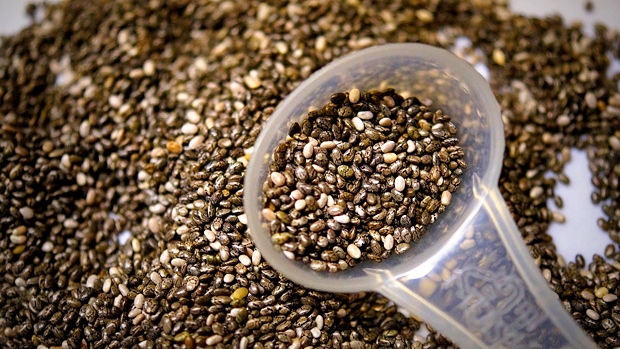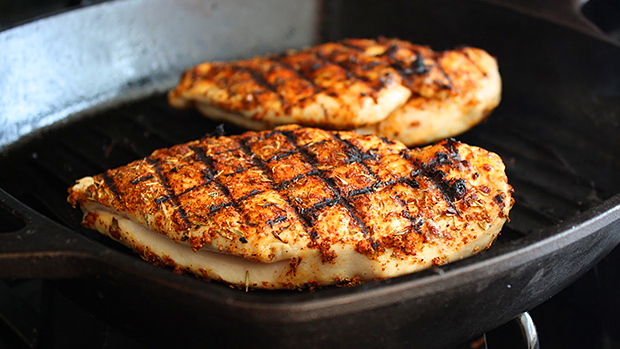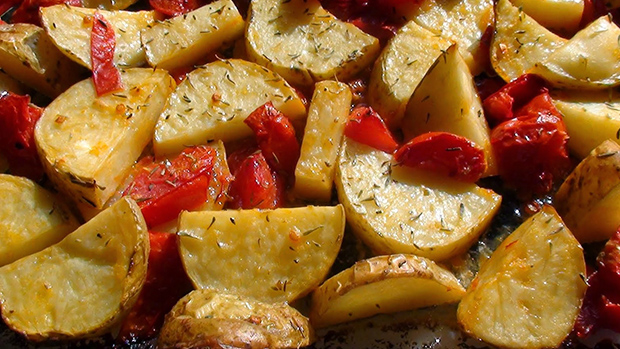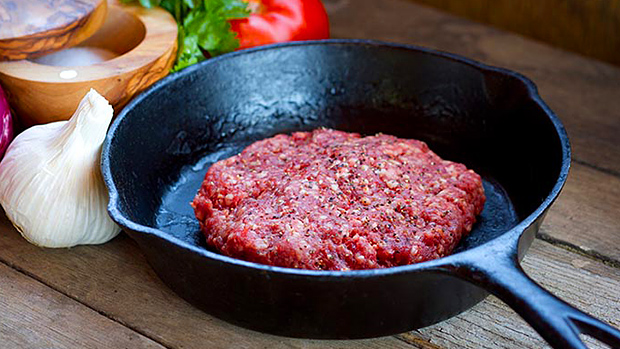Of course you're feeling blue. You asked for the Super Nintendo Classic for Christmas and instead you got a Donald Trump chia head because your wife wanted to replace the stupid oven and there wasn't any money left over for good presents.

I feel your pain, guy, but rather than let that Donald Trump chia head molder away in the closet of unwanted gifts, open up that box and salvage the chia seeds because they can be used to lose holiday fat. At least that's what a team of Canadian researchers found.
The scientists recruited 31 overweight adults and had them follow a modest calorie-restriction diet (500 calories fewer than what was needed for maintenance) for 6 months. The test subjects were split up into two groups:
- The first group ate 36 grams of oat fiber (about 2 tablespoons) per 1,000 calories of ingested food.
- The second group ate 30 grams of chia seeds (also about 2 tablespoons) per 1,000 calories of ingested food.
The scientists then tracked changes in body weight, waist size, body composition, glycemic control, C-reactive protein (an indicator of systemic inflammation), and obesity-related hormones.
The chia group lost about 4.5 pounds of fat and decreased their waist size by about an inch and a half while the oat fiber group didn't see any significant changes.
The chia group also experienced a downward trend in C-reactive protein (a good thing because it means systemic inflammation went down), along with increased production of adipokinectin (a hormone that regulates fatty acid breakdown). The oat fiber group wasn't as lucky and stayed pretty much the same.
Oddly enough, while the chia seed intervention caused the men to lose fat, the fat loss apparently had nothing to do with improved insulin balance, which probably had the scientists stroking their chins so hard and so long they developed a skin rash.
Why exactly the subjects lost weight remained a mystery to the researchers, but they guessed that the chia seeds' "rich nutrient composition, including fiber, ALA (alpha linolenic acid), protein, minerals, and antioxidants may act individually or collectively to demonstrate benefits."
Granted, the guys in the study were on a calorie-restriction diet, so you have to wonder how much of the effect was because of the diet instead of the chia seeds. Still, the other group of fat guys was on the SAME diet and they didn't lose much weight or experience improved blood values. The only difference was that the successful group ate chia seeds and the non-responders ate oat fiber.
The question is, would taking two tablespoons of chia seeds once or twice a day do anything for athletes or lifers who were just trying to cut a few pounds so their abs might surface?
Rat studies support the notion. Adding chia seeds to their diet has led to favorable changes in blood fats and reductions in visceral fat and blood glucose levels. Likewise, several other studies in humans have shown that eating either milled or whole-seed chia increases satiety (which alone might make it worth taking) and post-meal blood glucose.
But data on long-term effects of chia supplementation are scarce. Luckily, there are a few decent studies on psyllium husk (what Metamucil is made of). The general consensus is that taking one teaspoon of psyllium two or three times a day can lower blood sugar significantly, increase satiety, and in general make it easier to lose body fat.
That makes you think these properties are common to most types of fiber (why oat fiber failed to make the grade in this study is a puzzle), so taking anywhere from a teaspoon to a tablespoon of chia seeds a couple of times a day, either with meals or before, would help fill you up and improve blood glucose levels, both of which could help you lose fat.
Chia seeds aren't bad nutritionally, either, as a couple of tablespoons contain more omega-3 fatty acids than a handful of walnuts, as much calcium as a glass of milk, and more iron than a serving of spinach, along with a whole bunch of beneficial phytochemicals.

You can mix dry chia seeds into protein shakes or juices, as well as mix them into yogurt or oatmeal. The more ambitious types can use them in lieu of eggs in baked goods, as breading for fish or chicken, or as filler to make giant meatballs or burgers.
- Vuksan V et al. Salba-chia (Salvia hispanica L.) in the treatment of overweight and obese patients with type 2 diabetes: A double-blind randomized controlled trial. Nutr Metab Cardiovasc Dis. 2017 Feb;27(2):138-146. PubMed.





